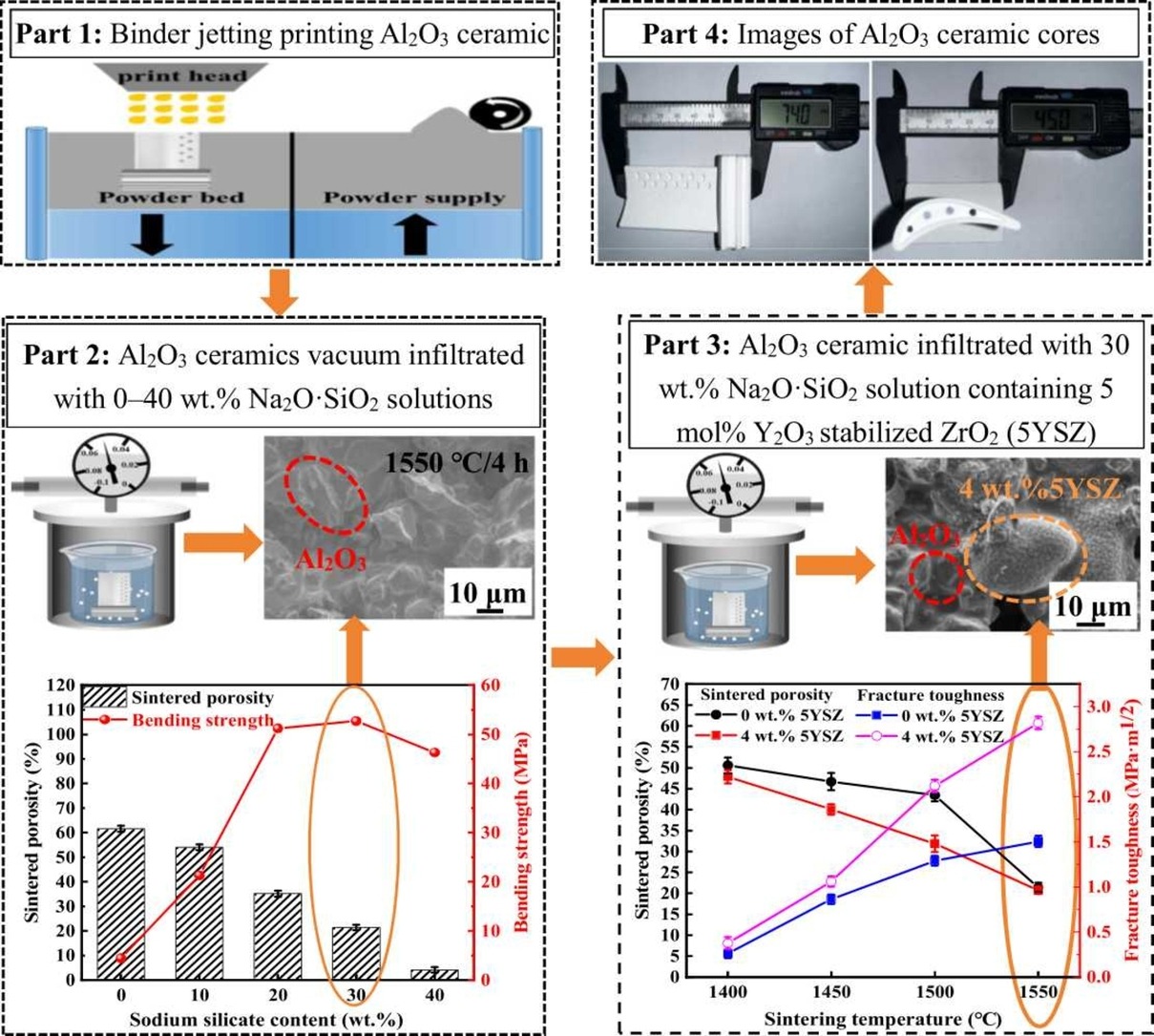·Paper Publications

Journal: Journal of Materials Processing Technology
Included Journals: SCI
DOI number: 10.1016/j.jmatprotec.2024.118454
Date of Publication: 2024-05-22
Abstract: Binder jetting additive manufacturing (BJAM), a combination of liquid binder and solid powders, was widely utilized to fabricate complex–structured alumina (Al2O3) ceramic cores. However, the high porosity, high brittleness and low mechanical strength of Al2O3 ceramics generally limit their industrial applications. To balance the contradiction between porosity and bending strength and improve the fracture toughness of Al2O3 ceramic core, sodium silicate (Na2O·3.2SiO2) solution and 5 mol% yttrium oxide stabilized zirconia (5YSZ) nanopowders were selected as densifier and toughening phase in this study. By means of the vacuum infiltration and sintering process, the effects of Na2O·3.2SiO2 contents, sintering temperatures and 5YSZ amounts on porosity, bending strength, and fracture toughness of Al2O3 ceramic were systematically investigated. Results show that the porosity and fracture stress of Al2O3 infiltrated with 30 wt% Na2O·3.2SiO2 solution sintered at 1550 ℃ reached 21.4±1.1% and about 52.7 MPa, respectively. When the amounts of 5YSZ in 30 wt% Na2O·3.2SiO2 solution were increased from 0 wt% to 6 wt% and the sintering temperatures were varied from 1400 ℃ to 1550 ℃, the fracture toughness of Al2O3 ceramic gradually enhanced to the maximum value of 2.8185±0.071 MPa/m1/2 obtained at 4 wt% 5YSZ and 1550 ℃, which was increased by 87.44% compared with the infiltrated sample without 5YSZ. Therefore, using BJAM technology to fabricate a strong–tough Al2O3 ceramic cores for the turbine blades casting could realize short process and efficient preparation of the ceramic cores, which had a great theoretical foundation and application potential in the casting field.
Links to published journals: https://www.sciencedirect.com/science/article/abs/pii/S0924013624001729?via%3Dihub
